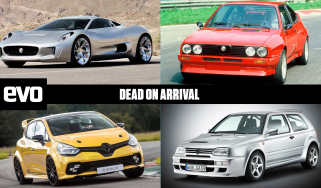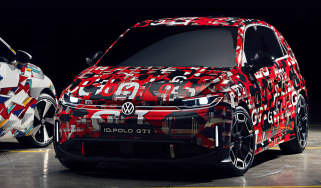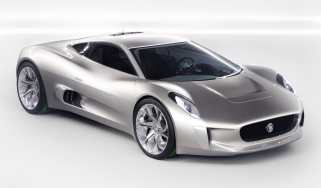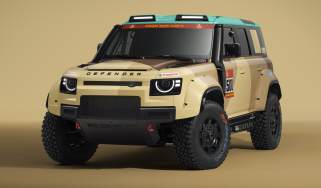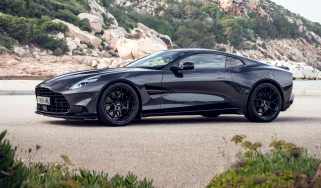Volkswagen EA 128 – dead on arrival
It was a four-door with a Porsche flat-six at the rear – which was exactly what ’60s America didn’t want
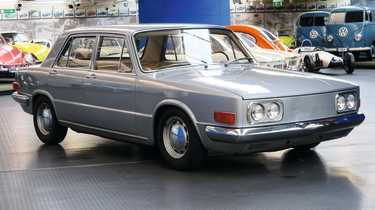
The VW Beetle was not an immediate success in the US. In fact, in its first year on sale there the total number sold was two. But Volkswagen kept plugging away and by the late ’50s the Bug was a roaring hit with a six-month waiting list, buoyed by clever advertising from agency DDB that sold Americans on the appeal of these funny-shaped anti-heroes.
VW’s slow-burning and unexpected success spooked General Motors and it decided to fight fire with fire by developing a rear-engined compact car of its own, the all-new Corvair of 1960, which ran an air-cooled flat-six hung behind its rear axle. Though a ‘compact’ car by American standards, the Corvair dwarfed the Beetle while offering things the German car could not, such as four doors and a station wagon, while all VW had in return was the lacklustre Beetle-based Type 3, still with just a pair of passenger doors. Volkswagen decided it needed a bigger model to take on the threat of the Corvair and the result was the car you see here, codenamed EA 128.
> Panther Solo 1 – dead on arrival
Started in 1963, project EA 128 was even longer and wider than a Corvair and, just like its rival, had a rear-mounted, air-cooled flat-six. But not just any flat-six. What it had was the 2-litre flat-six from the Porsche 911 (or 901 as it was then known), tuned down from 130 to 90 horsepower. This wasn’t all the coupe donated to the new project, because EA 128 also had 911-derived suspension and prototypes sat on the attractive steel wheels of early 911s, complete with the same dished chrome centre covers.
VW’s archives on EA 128 are mysteriously vague, but there’s good reason to suspect that Porsche did much of the development work on this car, not least because it seems to have been conceived around 911 hardware a year before the 911 was announced. There’s another clue in design proposals that presaged the squinty front-end style of the ill-fated, Porsche-created EA 266 hatchback (DOA, evo 286), though physical prototypes used a blockier style with quad headlights like the later VW 411.
The real smoking gun is the dashboard design, uncannily similar to that of an original 911 in style and with instruments carrying 911-alike green markings behind an early 911 four-spoke steering wheel, modified to carry the VW roundel. What didn’t come from a Porsche was EA 128’s extra-wide passenger seat, which created a front bench for three people, giving away this car’s aim to conquer America.
It might be a stretch to call EA 128 a six-seater Porsche but it certainly had plenty of 911 DNA in its design and engineering, and therein lay the first of its problems. When the 911 went on sale in the US it cost $6490, while the priciest Corvair was just $2608. Using the expensively engineered parts of a low-volume coupé to take on a mass-market family car was always going to be an accountancy challenge.
The real death knell for EA 128, however, came in late 1965 when American consumer activist Ralph Nader published Unsafe at Any Speed, a book which attacked the car industry’s resistance to safety features and devoted many pages to the wayward high-speed handling characteristics of the rear-engined Chevrolet Corvair.
A few years later Nader would direct his ire towards the Beetle as well, but for now the Corvair was his whipping boy and his words were catastrophic for GM as sales crumbled and lawsuits rolled in. The fate of the Corvair was felt in Wolfsburg, where management realised the folly of mimicking a rival product that was now as desirable as used bandages, and by 1967 they had wiped their Porsche-engined family car from their product plan. All that remains of EA 128 are two prototypes, one saloon and one wagon, which have been preserved in Volkswagen’s heritage collection.
This story was first featured in evo issue 312.
